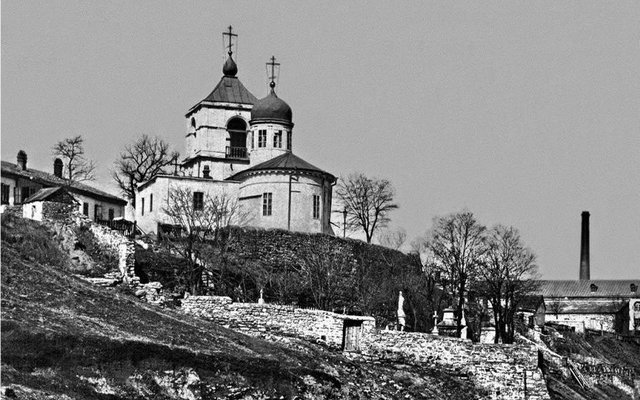The construction boom of the temples began with the Baptism of Rus. Technology and architecture was similar to the Byzantine, and the builders were mostly newcomers. Up to the present day, these facilities, in its original form is not preserved. One of the oldest monuments is the Church of St. John the Baptist, this is truly an outstanding work of art related to medieval architecture, unique in its kind, preserved from the times of Byzantium.
Historical facts
The Greek Church of St. John Predtechi located on the banks of the Estuary. Built it so long ago that its history over the centuries overgrown with rumors and legends. One of them, the building was erected over the well of stones, which killed John the New. He was tortured to death, one of the Nawab of the Golden Horde, which in those days was preach and impose their faith.
The reason is that an Orthodox merchant Ioann, who came from the Turkish city of Trebizond and received permission to trade in the city, refused to accept the faith of the Muslims. In a sign of devotion to Christianity, on his grave was built a chapel, later on, the relics were transported to the territory of the Moldavian Suceava (today the Romanian land). A healing spring, which come from all neighborhoods, was named John.
The exact date of construction of the Greek Church is unknown, but it presumably dates from the late thirteenth century or early fourteenth. These guesses are based on the analysis plan of the Church, which is considered typical in Moldova and Bulgaria. This is confirmed by the formation of urban Orthodox diocese, which was established 1347.
The 15th century marked the history of the Church, placed in it the seat of the Exarch of Byzantium, who was the Ambassador of the Moldavian Principality. At the end of the same century the Cathedral was almost completely destroyed in the 16th century on the money of the Greek community of the city, was rebuilt.
Church in Soviet times
In the early 60's of the last century, next to the Shrine is formed by a large fish market and the picture looked like this: the smell of fresh and rotten fish smell everywhere, or sellers praise their goods, screaming Bazaar gossips. Above it all towered the temple, a condition which, mildly speaking, was disastrous, which was confirmed broken Windows and doors, shrubby trees were growing on the walls and on the roof of the building.
In 1972, the reconstruction and the revival of the monument, historians, architects and artists did their best to keep all the fine details, removing from panoramas, only very damaged moments.
Difficulties in recovery were not enough, experts had to study ancient samples of many elements, and to produce analogues. Was even picked up sand and limestone, of which many centuries ago our ancestors built the temple. Around the building were removed and taken land on the dome erected the cross.
The restoration lasted until the 90s, in 1991, the Church was completely restored and returned to the Church. Then was exhibited lapidary Museum collection.
The Church today
Today the Shrine is completely different from the ancient monument. But according to scientists and historians, the temple is unique. According to some reports and conjecture, in the 3rd century on the site of the Greek Church was the Orthodox Church.

In the mid-19th century near the Church a Bell tower was erected, a chime that is heard so far. On the background of blue sky, looks especially beautiful Church, with its pale blue walls. The Greek Church is part of the Ukrainian Orthodox Church. Plunge into wonderful atmosphere of antiquity and ordinances of the temple attracts thousands of tourists, pilgrims and of course religious historians.
The auth or of the article @vpodessa


Jurgan your post is very interesting
Downvoting a post can decrease pending rewards and make it less visible. Common reasons:
Submit